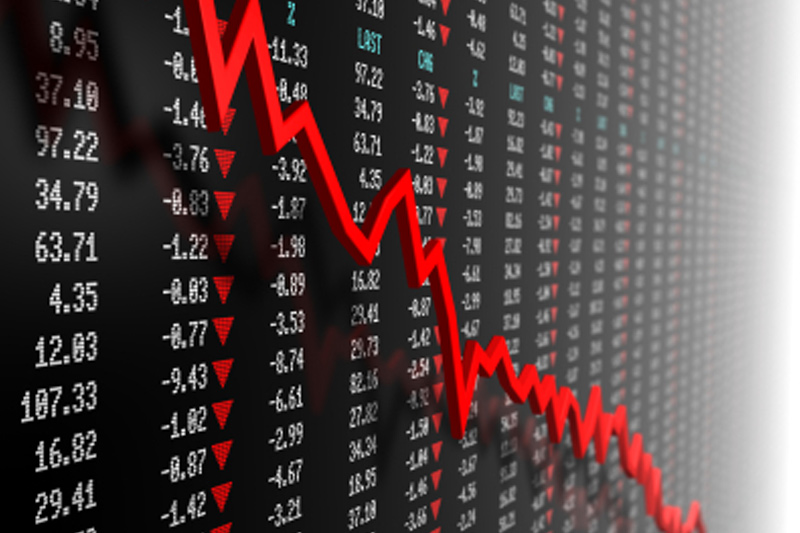Investing.com - The euro fell to an almost two-month low against the pound on Friday, as global growth concerns continued to weigh on demand for the single currency, while markets turned to the release of key U.S. employment data later in the day.
EUR/GBP hit 0.7961 during European afternoon trade, the pair's lowest since May 16; the pair subsequently consolidated at 0.7966, falling 0.19%.
The pair was likely to find support at 0.7950, the low of May 16 and a multi-month low and resistance at 0.8016, the high of June 27.
The euro remained under pressure after European Central Bank President Mario Draghi stated on Thursday that the economic outlook faces downside risks, adding that indicators for the second quarter point to weakening growth in the euro zone.
Draghi said that there was probably a "renewed weakness in economic growth" in the last three months, with "heightened uncertainty”. Draghi also refused to speculate on the chances of a third round of Long Term Refinancing Operations, in which provides cheap loans to European banks in an attempt to encourage them to lend.
The comments came after the central bank cut its benchmark interest rate to a record low 0.75% in July, in a bid to bolster faltering growth in the region.
Sentiment also weakened after International Monetary Fund Director Christine Lagarde said earlier that the IMF will reduce its estimate for global growth this year on weakness in investment, jobs and manufacturing in Europe, the U.S., Brazil, India and China.
Meanwhile, investors were eyeing the release of a U.S. nonfarm payrolls report later Friday, for clues on the extent of damage the euro zone's debt crisis is inflicting on the U.S. economy and whether the Federal Reserve might also attempt more monetary stimulus.
The pound was steady against the U.S. dollar with GBP/USD easing up 0.05%, to hit 1.5533.
Also Friday, official data showed that U.K. producer price inflation input fell slightly more-than-expected in June, declining 2.2% after a 2.6% fall the previous month.
The data came after Bank of England policymakers left interest rates unchanged at 0.5% on Thursday and voted to increase the stock of asset purchases to GBP375 billion.
Later in the day, the U.S. was to publish reports on nonfarm payrolls and the unemployment rate.
EUR/GBP hit 0.7961 during European afternoon trade, the pair's lowest since May 16; the pair subsequently consolidated at 0.7966, falling 0.19%.
The pair was likely to find support at 0.7950, the low of May 16 and a multi-month low and resistance at 0.8016, the high of June 27.
The euro remained under pressure after European Central Bank President Mario Draghi stated on Thursday that the economic outlook faces downside risks, adding that indicators for the second quarter point to weakening growth in the euro zone.
Draghi said that there was probably a "renewed weakness in economic growth" in the last three months, with "heightened uncertainty”. Draghi also refused to speculate on the chances of a third round of Long Term Refinancing Operations, in which provides cheap loans to European banks in an attempt to encourage them to lend.
The comments came after the central bank cut its benchmark interest rate to a record low 0.75% in July, in a bid to bolster faltering growth in the region.
Sentiment also weakened after International Monetary Fund Director Christine Lagarde said earlier that the IMF will reduce its estimate for global growth this year on weakness in investment, jobs and manufacturing in Europe, the U.S., Brazil, India and China.
Meanwhile, investors were eyeing the release of a U.S. nonfarm payrolls report later Friday, for clues on the extent of damage the euro zone's debt crisis is inflicting on the U.S. economy and whether the Federal Reserve might also attempt more monetary stimulus.
The pound was steady against the U.S. dollar with GBP/USD easing up 0.05%, to hit 1.5533.
Also Friday, official data showed that U.K. producer price inflation input fell slightly more-than-expected in June, declining 2.2% after a 2.6% fall the previous month.
The data came after Bank of England policymakers left interest rates unchanged at 0.5% on Thursday and voted to increase the stock of asset purchases to GBP375 billion.
Later in the day, the U.S. was to publish reports on nonfarm payrolls and the unemployment rate.
